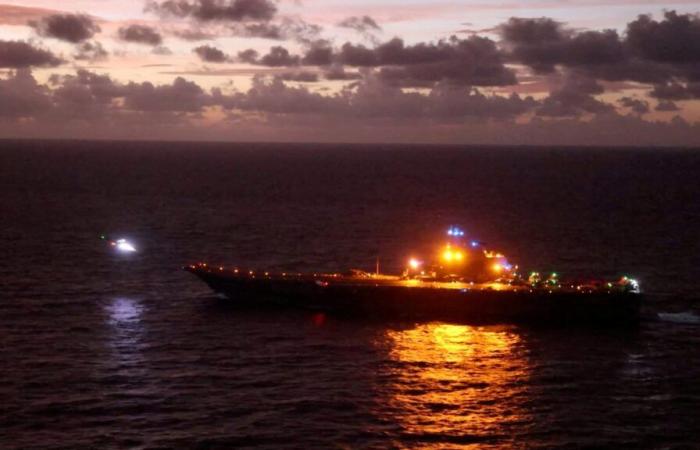
In a concerning development, Taiwan reported the detection of 41 Chinese military aircraft and vessels surrounding the island. It comes just days before President Lai Ching-te makes a stop in Hawaii as part of his Pacific tour, which has already drawn heavy criticism from Beijing. The Chinese government vehemently asserts that Taiwan is an integral part of its territory and opposes any international recognition of the island as a sovereign nation.
Underscoring China's aggressive stance toward Taiwan, fighters, drones and warships have been deployed almost daily by Beijing in recent years. The number of exits has steadily increased, indicating increased tensions in the region. In the 24 hours to Friday morning, Taiwan's Defense Ministry reported detecting 33 Chinese aircraft and eight warships in its airspace and waters. Notably, this included 19 aircraft involved in China's “joint combat readiness patrol”, marking the largest number seen in more than three weeks.
Adding to the concern, Taiwan also spotted a balloon about 172 kilometers (107 miles) west of the island. This follows four similar sightings since Sunday, raising questions about possible military exercises in response to President Lai's visit.
Su Tzu-yun, a military expert at Taiwan's National Defense and Security Research Institute, expressed reservations about escalating tensions during Lai's overseas trip. He suggested that it could not be ruled out that China could carry out large-scale military exercises in response to Lai's visit.
President Lai, known for his strong stance on Taiwanese sovereignty—an outlook that China has called separatist—is undertaking his first overseas trip since taking office. Its itinerary includes brief stops in Hawaii and Guam to meet “old friends” while visiting Taiwan's three remaining peaceful allies. Similar stops by Taiwanese officials in the United States have previously triggered military exercises by China, underscoring the sensitive nature of such visits.
China's reaction to Lai's planned trip has been very confrontational. On Thursday, a spokesperson for China's Defense Ministry vowed to “ruin to nothing” any attempt at Taiwan's independence. When asked about potential countermeasures during Lai's peaceful tour, Wu Qian said China firmly opposes any official interaction with Taiwan in any form.
Since President Lai took office, China has conducted two large-scale military exercises around Taiwan. In addition, she constantly criticized his statements and speeches. Experts like Lin Ying-yu of Tamkang University say the extent of China's response will depend on Lai's remarks during his trip. Lin speculated that although military exercises could take place, they might not be large-scale due to unfavorable weather conditions.
The South Pacific region was once seen as a bastion of support for Taiwan's claim to sovereignty. However, in recent years, China has managed to persuade countries such as the Solomon Islands, Kiribati and Nauru to change their diplomatic recognition from Taipei to Beijing. Currently, among Taiwan's remaining 12 diplomatic allies, only the Marshall Islands, Tuvalu and Palau are from the Pacific region.
Beijing's efforts to woo Taiwan's allies and expand its influence in the region have raised concerns in countries including the United States, Australia and New Zealand. Mark Harrison, lecturer in Chinese studies at the University of Tasmania, highlighted how the shift in diplomatic recognition towards China has enabled deeper engagement between Beijing and these countries.
President Lai's upcoming visit represents a rare opportunity for him to represent Taiwan abroad and strengthen its claim to sovereignty. Despite criticism that these trips may seem performative or theatrical, they hold significant value for Taiwan in the international system. They provide legitimacy and reaffirmation of sovereignty—a critical aspect given current global political dynamics.
In conclusion, Taiwan's detection of 41 Chinese military aircraft and ships ahead of President Lai's controversial stopover in the United States has put the region on high alert. Growing tensions across the Taiwan Strait underscore China's persistent efforts to exert control over Taiwan and oppose any international recognition of its sovereignty. As President Lai prepares for his Pacific tour, which includes a stop in Hawaii, the world is watching with bated breath to see how China will respond and whether it will resort to large-scale military exercises or other measures to assert its dominance. The delicate balance between Taiwan's quest for sovereignty and China's unwavering claim to the island continues to shape regional dynamics, creating a complex geopolitical landscape in East Asia.





